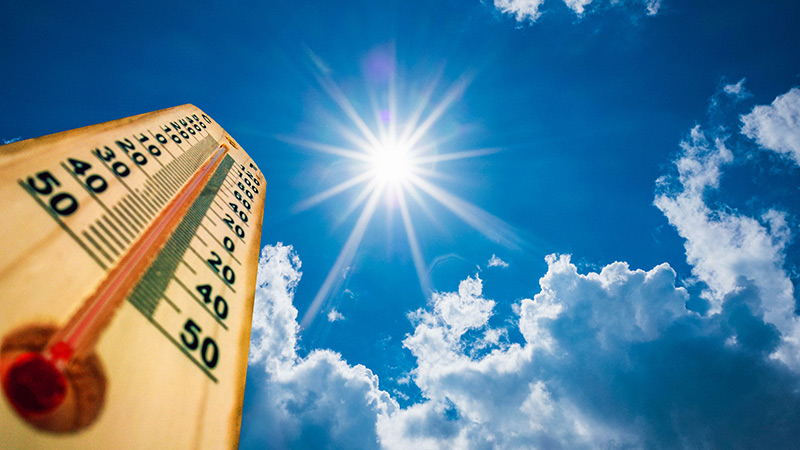Extreme temperatures are potentially dangerous

Related Stories
Staff report
COLUMBUS
Prompted by the high temperatures this week and with summer approaching, the Ohio Department of Health (ODH) is urging people to take precautions to prevent potentially dangerous heat-related illnesses, including heat stroke and heat exhaustion.
“Heat-related illnesses pose a serious health risk for all people, but especially for the very young, the elderly, and individuals who are overweight or have chronic medical conditions. These illnesses are preventable by taking precautions like drinking plenty of cool fluids and monitoring or limiting outdoor activities,” said ODH Medical Director Clint Koenig, M.D.
Here are some tips from OSH to follow during periods of high temperatures and high humidity.
Be A Good Neighbor
• Family, friends and neighbors are urged to periodically check on the elderly and those with chronic medical conditions and encourage them to stay in air-conditioned environments as much as possible and to look for an air-conditioned shelter if necessary and take cool showers or baths to cool down. Tell them to seek medical care immediately if they have symptoms of heat-related illness like muscle cramps, headaches, nausea or vomiting.
Drink Cool Fluids
• Help your body sweat and cool down by staying well hydrated with water. Don’t wait until you are thirsty before you start drinking water. Adults should drink eight 8-ounce glasses of water each day and drink more on hot and humid days. Drink two to four cups of water every hour while working or exercising outside; and avoid fluids that contain alcohol or caffeine because they can add to dehydration and increase the effects of heat illness.
Monitor or Limit Outdoor Activities
• Plan outdoor activities for the early morning or evening when the sun is less direct. Wear loose-fitting, light-colored clothing and wide-brimmed hats that protect against sunburn and helps keep the body cooler. Use a broad-spectrum sunscreen that protects against UV-A and UV-B rays and has a sun protection factor (SPF) of at least 15.
Move to the shade or into an air-conditioned building at the first signs of heat illness. Very young children may become preoccupied with outdoor play and not realize that they are getting overheated. Adults should require frequent breaks and bring them indoors for a cool drink. Children or youths involved in team sports should be closely monitored for signs of heat stress.
Know the Signs of Heat Stroke
• Heat stroke is a potentially life-threatening condition, characterized by a body temperature of 103 degrees or higher; red, hot and dry skin with no sweating; rapid pulse; headache; dizziness; nausea; confusion; unconsciousness; and gray skin color. People experiencing heat stroke need immediate medical assistance – call 911. Before help arrives, begin cooling the victim by any means possible, such as spray from a garden hose or by placing the person in a tub of cool water.
Don’t Forget Your Pets
• Animals kept outdoors should have plenty of fresh water and a covered area to get out of the sun and cool down.
Never leave pets in vehicles. Even if the windows are cracked open, interior temperatures can rise almost 20 degrees within the first 10 minutes.
 43
43
